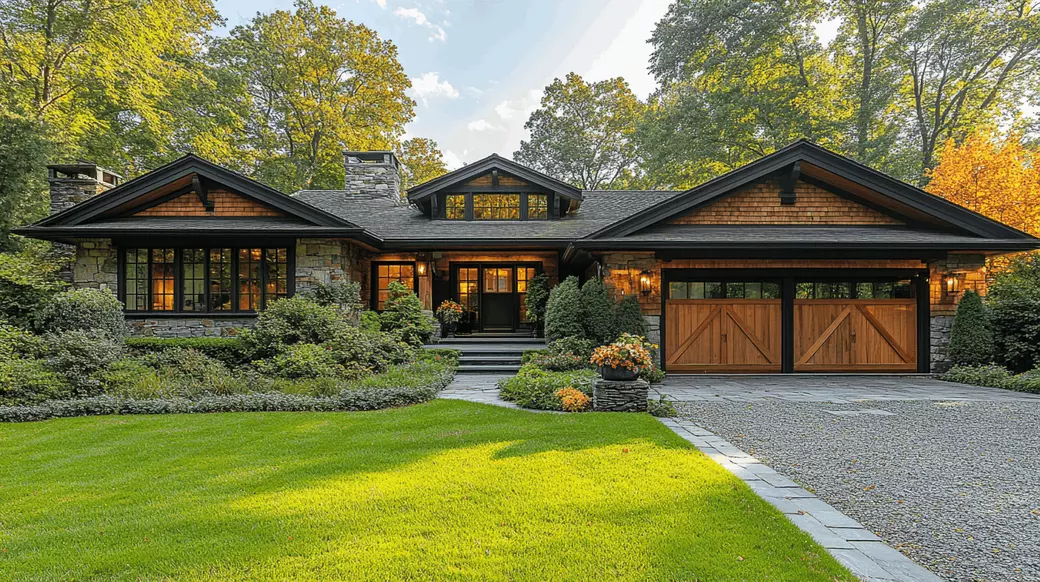Nassau vs. Suffolk: 2025 Guide to Buying a Single-Family Home on Long Island

Hello and welcome to Dream Select Realty’s continuing exploration of the 2025 Long Island real estate scene. In this article, we will take a close look at Single-Family Homes in Nassau and Suffolk Counties. Single-family homes have long been a staple of the American dream—especially on Long Island, where many families choose suburban life with a yard, driveway, and a bit of extra space.
But what do we mean by “single-family homes,” and how is the market changing as we move through 2025? As the landscape shifts—due to factors like remote work, growing demand for outdoor space, and changing economic conditions—buyers and sellers alike need to stay informed. We at Dream Select Realty keep tabs on the latest trends, gather feedback from local residents, and analyze data from both counties.
In this article, we will cover:
- Market Dynamics for Detached Houses in Both Counties
- Price Comparisons Between Nassau and Suffolk Single-Family Homes
- Inventory Trends and Their Impact on the Market
We will also offer helpful tips on buying and selling single-family homes in these two counties, along with how Dream Select Realty can guide you in making the best decision. Ready to learn more? Let’s dive in.
Market Dynamics for Detached Houses in Both Counties
Defining the Single-Family Home
A single-family home is a detached house built to hold one household. It usually has its own yard, walls, and entrances, giving owners a sense of privacy and control over their space. Long Island’s suburbs are filled with these types of homes—ranging from modest ranches to large colonial-style houses with sprawling lawns.
Why do so many people prefer them on Long Island?
- Privacy: No shared walls with neighbors, so noise levels are often lower.
- Outdoor Space: From small gardens to larger backyards, single-family homes typically include space to enjoy nature.
- Customization: Owners can renovate or add on without the same constraints as a condo or co-op.
Demand Drivers
Several factors are fueling the continued demand for single-family homes:
- Remote Work: People want extra space for offices or multipurpose rooms.
- Desire for Outdoor Areas: After recent events like the pandemic, having a personal yard is more important than ever.
- School Districts: Families often pick neighborhoods based on top-rated schools, which are generally found in areas featuring many single-family residences.
Overall, even as condos and townhomes grow in popularity (especially among younger buyers and downsizing seniors), the single-family home remains the main type of property choice for many Long Island residents.
Key Neighborhood Types
In Nassau County, you might find older but well-maintained homes in towns like Mineola, Westbury, or Baldwin, many of which are close to trains for easier commuting. In more affluent areas, like Garden City or Great Neck, single-family homes can be large and quite expensive, often featuring upscale renovations and large yards.
In Suffolk County, places like Huntington, Smithtown, and Babylon mix classic suburban living with a bit more land. As you move farther east (like in Riverhead or parts of the North Fork), you often find newer developments with spacious lots, attracting families who want more room and perhaps a lower initial purchase price than in parts of Nassau.
Price Comparisons Between Nassau and Suffolk Single-Family Homes
General Pricing Trends
While both counties have seen rising home prices in the past few years, Nassau County typically costs more than Suffolk County for a comparable single-family home. The reasons include:
- Nassau is closer to New York City, which appeals to commuters.
- Nassau’s population density often leads to higher demand and limited space for new construction.
- Certain Nassau neighborhoods boast top-rated schools and established communities, pushing up values.
On the other hand, Suffolk County covers a larger area, with more diverse communities—from busy suburbs to rural farms. You can find both high-end neighborhoods (like parts of the Hamptons) and more budget-friendly areas (like portions of Middle Island or Brentwood). In general, Suffolk offers a bit more space for your money, which is a major draw for those who do not mind a longer commute or want a more relaxed lifestyle.
Typical Home Prices
While exact prices shift with the market and depend on location, here is a rough snapshot for 2025:
- Nassau County:
- Average single-family home price: $650,000–$800,000 in many suburban towns.
- High-end or luxury areas (e.g., Great Neck, Old Westbury): $1.5 million and above.
- More affordable neighborhoods (e.g., parts of Hempstead or Elmont): $450,000–$600,000, though even these can rise quickly due to market competition.
- Suffolk County:
- Average single-family home price: $500,000–$650,000 for many communities.
- Luxury or waterfront areas (e.g., the Hamptons, North Fork, Huntington Bay): $1 million and above.
- More rural or inland towns with smaller lot sizes or older properties might come in around $400,000 or less, but these are becoming harder to find as demand increases.
Other Cost Factors
Keep in mind that property taxes tend to be higher in Nassau than in many parts of Suffolk, although this depends on the town and school district. Homeowners insurance might also cost more if you live near water or if your home is older and requires special coverage. On the flip side, new or well-renovated homes often offer lower maintenance costs—something to weigh when you consider your total budget.
Inventory Trends and Their Impact on the Market
Inventory Challenges
Inventory refers to the number of homes for sale. When inventory is low, buyers compete for fewer listings, pushing prices higher. In 2025, we still see limited inventory in many sought-after parts of Nassau and Suffolk. This stems from:
- Long-Time Homeowners Staying Put: Rather than downsizing or moving, many homeowners are aging in place, reducing turnover.
- High Demand: People from NYC and other regions continue to seek homes with yards and privacy.
- Slow Pace of New Construction: Building single-family homes requires land, permits, and high construction costs. Because Long Island is already heavily developed in certain areas, large-scale new developments are relatively rare.
Effects on Buyers
- Fierce Competition: Expect bidding wars, especially for homes in good condition or priced at market value.
- Higher Prices: Limited supply often means sellers can ask for more.
- Need for Preparation: Buyers should obtain mortgage pre-approval and be ready to make a strong offer quickly.
Effects on Sellers
- Opportunity to Sell Quickly: A well-priced, updated home can attract multiple offers.
- Potential for Above-List Sales: In a hot market, offers may exceed the asking price.
- Challenge of Finding a Replacement Home: Sellers who plan to stay on Long Island might struggle to find their next property if inventory remains tight.
Spotlight on Nassau Single-Family Homes
Nassau’s Suburban Appeal
Nassau County offers a blend of suburbia and urban convenience. Many towns have vibrant downtowns, public transit (Long Island Rail Road stations), and established communities. Families often choose Nassau for:
- Highly Rated School Districts
- Shorter Commute to NYC
- Established Neighborhoods with Mature Trees and Landscapes
Homes in Nassau can vary greatly in style and price. Cape Cod, Ranch, Colonial, and Split-Level homes are common. Historic neighborhoods may have Tudors and Victorians, especially closer to the city line. For those seeking a turnkey property, some areas have newly renovated homes with modern kitchens, open floor plans, and updated systems—but expect to pay a premium.
Tips for Nassau Homebuyers
- Research School Districts: If you have children (or plan to), top schools can drive value but also lead to higher taxes.
- Check for Renovations: Many Nassau homes were built decades ago. Updates in electric, plumbing, and insulation can save you from big repair bills later.
- Prepare for Taxes: Some Nassau communities are known for steep property taxes. Factor this into your monthly budget to avoid surprises.
Tips for Nassau Sellers
- Competitive Pricing: Even though it’s a seller’s market, pricing your home right from the start attracts more buyers and can spark bidding wars.
- Market Your Home’s Strengths: Do you have a short walk to the train, a modernized kitchen, or a newly finished basement? Highlight those features.
- Fix Up Minor Issues: A fresh coat of paint, clean landscaping, and small repairs can boost your home’s appeal and raise final sale prices.
Spotlight on Suffolk Single-Family Homes
Suffolk’s Diverse Landscape
Suffolk County spreads across a large area, offering everything from bustling suburbs to rural farmland and iconic beach communities. Single-family homes here can be found at a wide range of price points. Key draws include:
- Bigger Lots: Many Suffolk properties have larger yards, perfect for gardening, outdoor entertaining, or even adding a pool.
- Varied Neighborhoods: Whether you want a lively main street (like in Patchogue or Huntington Village) or a quiet country setting (like parts of Calverton or Eastport), Suffolk likely has a spot for you.
- Affordable Options: In certain inland areas, you might find single-family homes that cost less than their Nassau equivalents, although competition is growing.
Tips for Suffolk Homebuyers
- Commute Considerations: If you travel to NYC or western Long Island for work, know your train or highway routes. Suffolk’s eastern areas can be farther from these job hubs.
- Check the Zoning: Some Suffolk towns allow for more home expansions, additional structures, or farmland. Make sure the property’s zoning matches your plans (e.g., building a backyard guest house).
- Learn About Water Resources: Suffolk has its share of waterfront areas, so if you’re near the coast or a flood zone, look into flood insurance and local building rules.
Tips for Suffolk Sellers
- Emphasize Land and Lifestyle: If you have a spacious yard or live near beaches, vineyards, or parks, highlight that in your listing.
- Maintenance Records: Many Suffolk homes have wells or septic systems. Keeping records of maintenance and upgrades can assure buyers your home is in good shape.
- Set the Stage: Because lots are larger, landscaping can play a huge role. Mow the lawn, trim shrubs, and consider adding flower beds or patio furniture to make your property shine.
Preparing to Buy a Single-Family Home on Long Island
Financial Readiness
Before you start touring homes, take these steps:
- Check Your Credit: A higher credit score might get you a better mortgage rate, saving you thousands over the life of your loan.
- Get Pre-Approved: This shows sellers you are serious and lets you know your budget.
- Budget for Extras: Closing costs, moving expenses, home inspections, and possible renovations can add up. Set aside a cushion to handle these costs.
Home Inspections and Maintenance
Single-family homes often come with more upkeep than condos or townhomes. Make sure you:
- Schedule a Professional Inspection: Check the foundation, roof, plumbing, electrical, and more.
- Ask About Warranties: Sometimes recent renovations come with transferable warranties on items like roofs or appliances.
- Plan for Future Maintenance: Lawn care, snow removal, and general repairs are part of single-family living. If you are not handy, line up a good contractor or landscaper.
Working with a Real Estate Agent
A local agent—like our team at Dream Select Realty—knows the ins and outs of every neighborhood, from tax rates to community events. We can help you:
- Find Off-Market Listings: Some homes never hit public sites because sellers prefer a quiet sale.
- Negotiate Smartly: With fierce competition, strategy matters. We can help you craft an attractive offer that’s within your budget.
- Handle the Details: From scheduling showings to dealing with paperwork, we simplify the process so you can focus on finding the right home.
Tips for Selling a Single-Family Home on Long Island
Pricing Strategy
When inventory is tight, sellers can sometimes get high offers. But overpricing can turn buyers off. To find the sweet spot:
- Study Comparable Sales: Look at what similar homes in your area have sold for recently.
- Consider Timing: Spring and early summer often see more buyers, especially families looking to settle before a new school year.
- Stay Flexible: In a hot market, you might get multiple offers. Evaluate each one carefully—some buyers might offer more money but need more time to close, while others can close quickly.
Home Presentation
- Declutter: Aim for a clean, open look that lets buyers imagine themselves living in the space.
- Minor Upgrades: Fresh paint, new fixtures, and updated landscaping can make your home stand out in pictures and tours.
- Highlight Key Features: If you have energy-efficient appliances, a finished basement, or a prime school district, make sure that information is front and center.
Market Reach
- Professional Photos: Most buyers start their search online, so good pictures matter.
- Social Media: Platforms like Facebook and Instagram can showcase your home to a broader audience.
- Open Houses: In-person showings still matter. A well-staged open house can drum up excitement.
Future Outlook for Single-Family Homes
Potential Market Shifts
Real estate markets can ebb and flow with the overall economy, interest rates, and local factors. Over time, we could see:
- Slight Cooling if Rates Rise: Higher mortgage rates might dampen buyer activity, helping supply catch up with demand.
- Continued Value Growth in Prime Areas: Towns with top schools, waterfront access, or convenient commutes may keep seeing price increases.
- Increased Renovations: As older homeowners stay put, they might invest in upgrades, raising neighborhood values.
Technology and Sustainability
Trends in smart home features and eco-friendly upgrades may shape future buying and selling decisions. Single-family homes with solar panels, energy-efficient windows, or advanced security systems often sell faster and can command higher prices.
Community Development
Local governments sometimes encourage builders to create more single-family homes or revamp older housing stock. Keep an eye on new subdivisions or redevelopment projects—these can affect property values and availability in both Nassau and Suffolk.
How Dream Select Realty Can Help
At Dream Select Realty, we understand that single-family homes are more than just properties—they’re places for families to grow, remote workers to focus, and friends to gather. Our team offers:
- Local Expertise: We live and work in these communities, so we know the market on a street-by-street basis.
- Customized Searches: We’ll learn about your must-haves—like a big yard or a short commute—and tailor your home search accordingly.
- Negotiation Skills: Whether buying or selling, we guide you through pricing, offers, inspections, and closing.
- Trusted Connections: We can recommend lenders, contractors, and home inspectors who know the quirks of Long Island houses.
- Long-Term Support: Even after closing, we’re here to help with any real estate questions. We aim to build relationships that last for years to come.
Conclusion
Single-family homes remain a cornerstone of life in Nassau and Suffolk Counties. While limited inventory, rising prices, and shifting lifestyles can present challenges, the allure of having your own house on Long Island is as strong as ever. Families, remote workers, and retirees all continue to see the value in a standalone home—one that offers privacy, a yard, and room to grow.
Here are the main takeaways:
- Market Dynamics: Demand for single-family homes is fueled by remote work, school districts, and a desire for outdoor space.
- Price Differences: Nassau generally costs more due to proximity to NYC and well-known school districts, while Suffolk can offer larger lots and slightly lower entry prices.
- Inventory Impact: A shortage of listings leads to competition and higher prices, so both buyers and sellers need a good strategy.
- Buying Tips: Get pre-approved, do an inspection, understand taxes, and work with an agent who knows the local market.
- Selling Tips: Price competitively, stage the home well, and highlight any upgrades or unique features.
- The Future: Even if the market changes, single-family homes on Long Island should remain in demand—especially those with modern upgrades, eco-friendly features, and good community amenities.
If you are thinking of buying or selling a single-family home in Nassau or Suffolk, let Dream Select Realty guide you. Our deep knowledge of Long Island’s neighborhoods, combined with our personal approach, can help you make the best choice for your needs. We appreciate you taking the time to learn about the single-family home market in 2025, and we’re ready to assist whenever you are ready to take the next step.
Categories
Recent Posts










